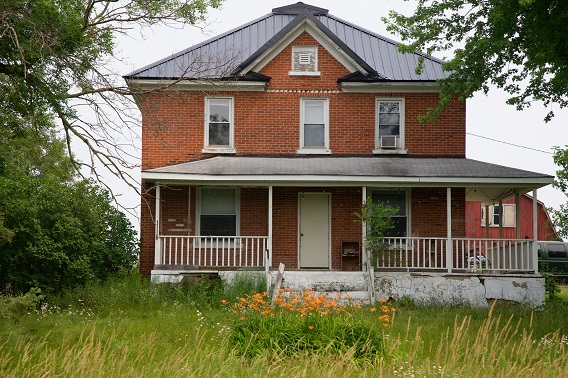
Many people believe older homes are built better than modern ones. They can have unique and charming designs and quirks. Popular home renovation shows tout the "good bones" of potential through layers of vintage paint, dust, and trend flops. Whether you dream of buying an older home or already have one, it's important to know your home inside and out and understand that it may come with a high price tag later, especially when it comes to home insurance costs. Insurance companies want to make sure you aren’t getting yourself into a money pit.
Why do older homes need more homeowners insurance?
Your home’s condition, age, and location determine the amount of home insurance you need, so it’s no surprise that an older home may come at the cost of high insurance rates. The bottom line is that insuring them is more expensive. Older homes endured decades, even centuries, of wear and tear from being lived in and the environment around them. The building materials used were less resistant to fire and weather. An insurance company prices home policies by evaluating risk. When you consider the factors that determine home insurance risk, you can see why a 50-year-old home can cost more to insure than a 5-year-old home.
Older home characteristics that affect home insurance rates
Home insurance premiums are based on recommendations by the National Association of Insurance Commissioners (NAIC). Here are common factors used to determine home insurance rates. These are all factors that can make the possibility of a total loss of an older home very real and costly.
- Plumbing — Older plumbing systems were made from galvanized steel piping, which can lead to rust issues, leaks, and breaks over time.
- Roof age and condition — Older roofs have been exposed to weather, wind, and wildlife for decades. Over time, roofing materials break down, leading to damage, leaks, and compromised insulation.
- Materials — Building materials for older homes often included reclaimed wood, hand-painted windows, antique doors, custom woodcarving, and accents. These items are hard to find, expensive to replicate, and many are not up to today’s safety standards.
- Electrical wiring — Older electrical systems again use less common materials that are not up to modern-day codes, such as knob and tube wiring. These often are not run on the correct amps for current standards and can pose a fire risk.
How to save money on home insurance for older homes
There are many ways to save money on home insurance. The standard coverages included in a home insurance policy may not be sufficient to fully protect an older home, especially if it’s historic or high-value. Below are some coverage options that can typically be added as an endorsement, allowing you to fortify your home insurance policy with additional coverage.
Replacement cost insurance
Opting for replacement cost coverage is a smart way to protect your older home, but a homeowner can take it a step further by acquiring guaranteed or extended replacement cost coverage. If the rebuild cost surpasses your limit, which can be the case for aging homes once labor and materials are factored in, guaranteed replacement cost extends your coverage limits to ensure that your home will be rebuilt.
Regular maintenance and upgrades
We see all kinds of maintenance issues that lead to home insurance claims. Regular home maintenance lowers your risk of major repairs. Roof maintenance or replacement is a big ticket item that can be the difference between even qualifying home insurance coverage or not. Taking care of your gutters is another critical maintenance item.
Add additional coverages
Another often overlooked consideration has less to do with your home’s structure than what’s under it. These in-ground coverages, called Water Backup Coverage and Service Line Coverage, can especially come in handy for those who live in older homes with old or crumbling pipes and underground service lines, such as cable, internet, gas, sewer, and electrical lines. Maintaining these lines falls on the homeowner and the repair costs can quickly get expensive.
Inland Flood Coverage can protect your older home from inland flooding, tidal water, storm surge, mudflow, and mudslides, especially if your home has a basement. Another helpful endorsement called Equipment Breakdown Coverage can be particularly beneficial for older homes because they are more likely to have outdated or malfunctioning equipment. While equipment breakdown insurance is not required, it is an important coverage to consider if you want to be fully protected against all potential risks.
THE NORTHERN NECK INSURANCE INTEGRITY PROMISE — We pledge to provide straight talk and good counsel from our NNINS Virginia insurance experts through our blog. While we hope you find this to be a helpful source of information, it does not replace the guidance of a licensed insurance professional, nor does it modify the terms of your Northern Neck Insurance policy in any way. All insurance products are governed by the terms in the applicable insurance policy.


